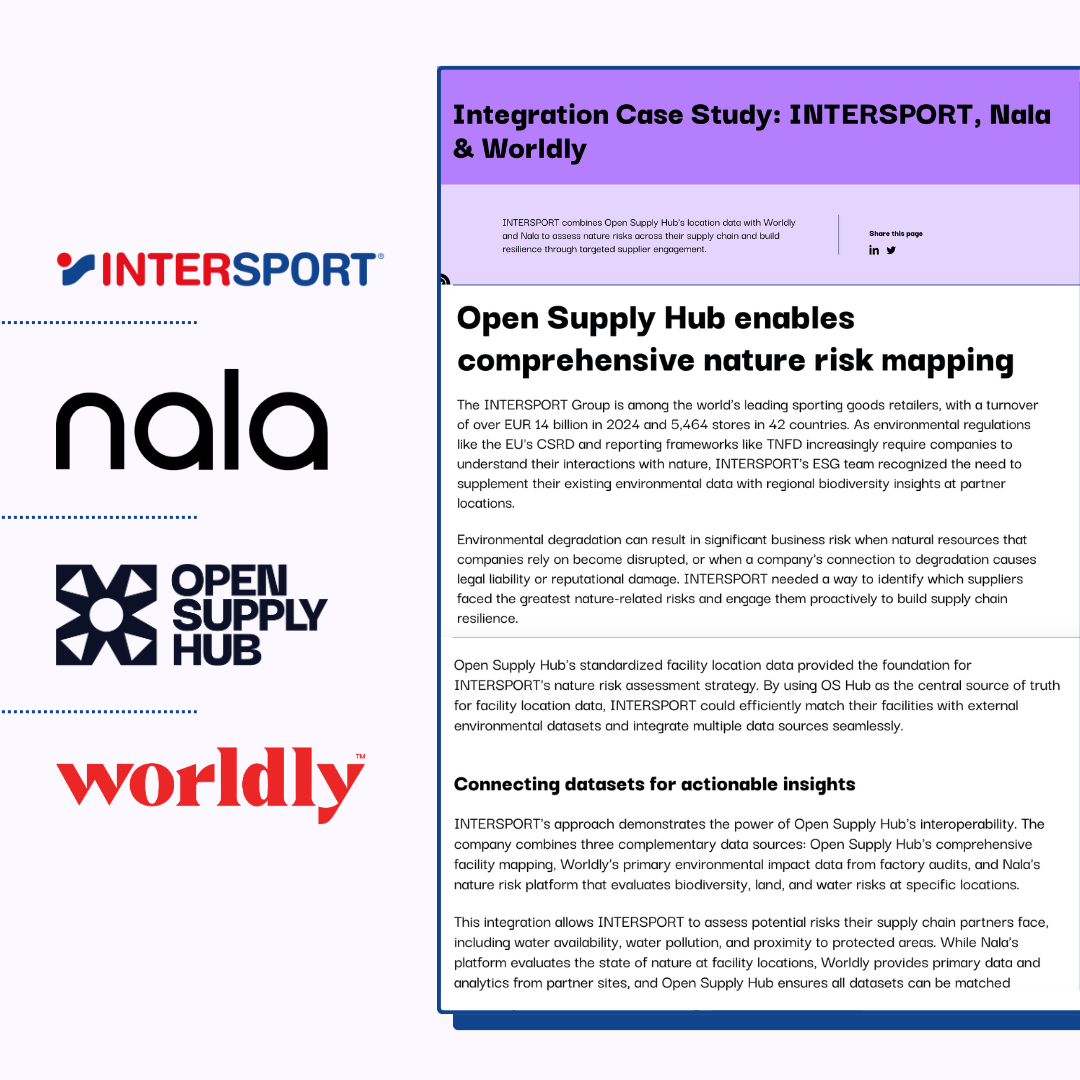
The twin crisis of climate change and biodiversity
Climate change and biodiversity loss are two interrelated and pressing issues facing our planet today. While the climate change issue has rightly started to receive considerable attention from businesses, the topics of biodiversity and nature loss have not yet found their way into the corporate boardroom - but this is about to change.
Climate change refers to the long-term changes in global temperatures caused by human activities and related changes in precipitation patterns, and extreme weather events. Biodiversity loss, on the other hand, refers to the reduction of the variety of life on Earth. Biodiversity is the cornerstone of life, encompassing everything from genes and microbes to entire ecosystems like coral reefs and forests. It is a product of over 3 billion years of evolution, shaped increasingly by human activity. Biodiversity provides numerous benefits to our economy and society, including food, medicine, energy, clean water, and clean air.
Unfortunately, biodiversity and nature are in crisis - just as the climate system. Earth’s wildlife population has declined by 70% over the past 50 years, with up to a million species at risk of extinction today. Over a third of both the world’s forest area and topsoil have been destroyed and degraded and by 2030 global water supply is expected to fall short of demand by 40%. As for climate change, human activity is the primary cause of biodiversity loss, degrading nature through land use change, resource exploitation, pollution, and - you guessed it - climate change.
The two crises are importantly intertwined as they interact with each other in complex ways. For example, climate change can directly affect biodiversity by altering habitats, changing migration patterns, and increasing the frequency and severity of natural disasters. Similarly, biodiversity loss can exacerbate climate change by reducing the capacity of ecosystems to sequester carbon and regulate the water cycle. Biodiversity is essential for limiting climate change, as ecosystems like forests and wetlands are natural carbon sinks. Indeed, about one-third of the greenhouse gas emissions reductions needed in the next decade could be achieved by enhancing nature's ability to absorb carbon alone.
Why does nature and biodiversity matter to businesses?
For one, nature and biodiversity are essential to fighting climate change. Thus nature-based climate solutions that protect, restore and sustainably manage ecosystems constitute a valuable opportunity for businesses in working towards their net-zero ambitions.
However, nature matters a lot beyond its carbon sequestration capacity. Nature importantly underpins our economic activities. According to the WEF, more than half of the world’s economic output is highly or moderately dependent on nature. With the true extent likely being higher considering how our forests, rivers, oceans and soils provide us with the food we eat, the air we breath and the water we drink and irrigate our crops with. Thus, as nature and its ecosystems break down, so too will the industries that power and shape our lives.
There are ample, real life examples of nature loss already putting businesses at risk:
- For instance, a lack of bees threatens California’s Almond production - where 80% of the world’s almonds come from. The lack of suitable habitats for pollinators means that bees need to be trucked in from out-of-state. This is required at increasing rates. As beekeepers’ hive rental fees increase with higher demand, so do farmers' operational costs. A pattern that holds true more broadly for pollination dependent agriculture.
- An example from another sector regards Taiwan's microchip industry. Microchip manufacturing is highly reliant on high-quality water for cooling and cleaning purposes. Taiwan's freshwater supply relies on the regular occurrence of monsoons. Lack of rainfall has previously led to water shortages and freshwater needed to be brought to manufacturing sites with water trucks, increasing costs and leading to production interruptions. Considering Taiwan's dominance in microchip production, this particular dependence on nature has the potential for far reaching impacts on the world’s tech supply chain.
Public concern around the high dependence and impact of businesses on nature is rising. The international community has laid the groundwork with the UN agreeing on the Kunming-Montreal Global Biodiversity Framework (GBF) in December 2022. Establishing a multilateral agreement that provides a roadmap with specific goals and targets towards the protection and restoration of global biodiversity - similar to what the Paris Agreement did for climate in 2015. The GBF framework explicitly addresses the role of business in the reversal of nature loss. Target 15 of the framework calls for businesses to regularly monitor and report their nature-related risks and impacts. Check out our blog post What does the Kunming-Montreal Global Biodiversity Framework mean for businesses? for more information on Target 15.
The first governmental regulation requiring nature-related corporate reporting is the European Corporate Sustainability Reporting Directive (CSRD). Among other sustainability issues, CSRD will require large companies to report on their nature-related impacts regarding biodiversity, ecosystems, pollution, water use, and resource use - starting as soon as 2024. Further pressure for corporate consideration and reporting on environmental impacts and risks is increasingly coming from investors. With Investors managing over $130 trillion in assets calling on companies to disclose further environmental data.
What can businesses do?
Businesses are required to think beyond net-zero and consider and enhance their impacts and dependencies on nature and biodiversity holistically. Doing so yields numerous opportunities. Companies can improve the resilience of their operations and supply chain, avoid regulatory costs, increase their attractiveness to employees, improve their investment profile and secure their social license to operate. Furthermore, businesses pioneering nature-related impact and risk assessments and commitments on footprint reduction set themselves up for a nature-positive future and can importantly contribute to reversing nature and biodiversity loss.

However, considering a company's interaction with the natural world and improving on it is a complex task. There is no one metric and method to rely on. To help break down this complexity, there is work underway in the form of frameworks such as the Taskforce on Nature-related Financial Disclosures (TNFD) and Science Based Targets for Nature (SBTN) which define unified reporting and target setting standards. Check out our blog post The reporting jungle - the very basics easily explained for more clarity on these frameworks.
Nala is on the mission to help businesses get started on measuring, managing and reporting their interaction with nature - enabling them to successfully tackle the crisis of nature and biodiversity loss.
Contact us to learn more about how Nala can help your business to become a sustainability leader.


.jpeg)

